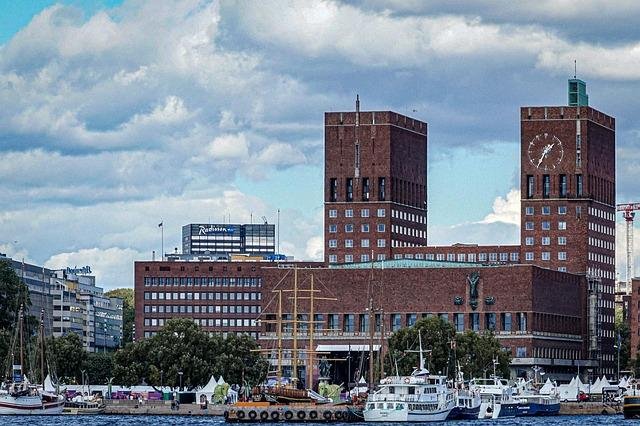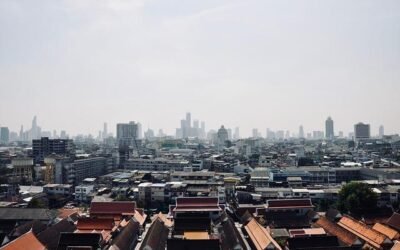oslo, the vibrant capital of Norway, is celebrated not only for its stunning fjords, modern art, and Viking heritage but also as an epicenter of academic excellence. If you’re a traveler passionate about education – whether you love touring ancient university campuses,delving into fascinating academic stories,or simply soaking up the unique student atmosphere – Oslo offers much more than meets the eye.This comprehensive guide invites you to uncover Oslo’s educational travel secrets, explore important academic sites, and pick up smart tips for an enriching journey.
Why Explore Oslo’s Academic Destinations?
Visiting educational landmarks in Oslo is like stepping into living history; the city’s universities and schools are not just hubs of learning, but also key witnesses to national development, science breakthroughs, and cultural evolution. Exploring these academic gems provides:
- Insight into Norway’s rich educational heritage
- architectural wonders blending neo-classical charm with modern Scandinavian design
- Opportunities to engage with local students, research centers, and vibrant campus life
- Learning experiences through museums, lectures, and guided campus tours
Oslo’s Top Academic & Historic University Highlights
The University of Oslo (UiO) – Norway’s Oldest and Grandest
Founded in 1811, the University of Oslo stands at the heart of the city’s academic prowess.UiO’s original campus on Karl Johans gate dazzles with its neoclassical columns, echoing ancient Greek temples – a testament to Norway’s aspirations of wisdom during its independence movement.
- Don’t miss the Domus academica building, where the Nobel Peace Prize ceremony was hosted until 1989.
- Wander the lush Blindern campus, a lively hub for students with modern facilities and peaceful surroundings.
- Peek into the University Aula, famous for its vibrant Edvard Munch murals – a blend of art and academic tradition.
OsloMet – Urban Modernity & Innovative Research
Oslo Metropolitan University (OsloMet) is a thriving center for applied sciences and urban studies. Its strategically located campus fosters international research partnerships and cutting-edge learning.
- The Pilestredet campus is a showcase of modern Norwegian architecture and practical learning environments.
- Visit during student fairs or events for a taste of Oslo’s innovative, future-focused academic culture.
Norsk Skolemuseum – Oslo School Museum
Take a nostalgic journey through norway’s educational evolution at the Oslo School Museum. Set within an authentic 19th-century schoolhouse,exhibits feature antique classroom equipment,uniforms,and fascinating stories about pedagogical reforms across Norway’s history.
- Interactive displays let visitors “step into the shoes” of a 19th-century pupil.
The National Library of Norway – academic Treasure Trove
While not a university, the National Library on Henrik Ibsens gate is a world-class resource for researchers and curious travelers alike. Its extensive collection includes manuscripts, rare books, maps, and media from centuries of Norwegian history.
- Don’t miss the rotating exhibitions and public lectures on literature and knowledge history.
Norwegian School of Theology, Religion and Society (MF)
Founded in 1908, MF is one of Northern Europe’s largest schools for theology and religious studies, featuring a distinctive modern campus and an active schedule of public debates and symposiums.
Hidden Academic Gems: Lesser-Known Educational Sites in Oslo
- Akershus Fortress Schoolrooms: Once home to historic military academies and now featuring unique guided tours that cover tales from Europe’s oldest castle-based classrooms.
- Kuben Upper Secondary School: Renowned for its innovative architecture and vocational programs,this high school regularly wins international awards for its sustainability focus.
- The Science Park (Forskningsparken): A hub of scientific innovation connected to UiO,Forskningsparken fosters start-ups and spin-offs,offering “Open Days” for insight into cutting-edge Norwegian research.
Historical Facts: Oslo’s Academic Heritage
- Oslo was home to Norway’s first university, established as part of the country’s nation-building efforts after separation from Denmark.
- In the early 20th century, university campuses became gathering sites for political movements and key figures in Nobel history.
- Edvard Munch’s murals at the Aula have become not only artistic masterpieces but also symbols of Norwegian identity and academic aspiration.
- Women were first admitted to Norwegian universities in the late 19th century,making Oslo a pioneer in inclusive higher education.
- Today, Oslo’s student population includes over 100 nationalities, reflecting the city’s global educational ambition.
Benefits of Educational Travel in Oslo
- Unique Access to Knowledge: Explore museums, heritage centers, and live lectures not found in guidebooks.
- Networking Opportunities: Connect with students, academics, and local thought-leaders on open campuses and at university cafés.
- Cultural Immersion: Attend public debates, book launches, and academic festivals for a true taste of Oslo’s intellectual buzz.
- Inspiration for Life-long Learning: Educational travel sparks curiosity and broadens horizons beyond traditional sightseeing.
Practical travel Tips for Visiting Oslo’s Academic Sites
- Plan Ahead: Some campuses and museums offer guided tours only at certain times; check schedules in advance.
- ID & access: While most university libraries and cafeterias are open to visitors, a photo ID may be needed for entry.
- Dress Comfortably: Oslo’s academic sites often involve lots of walking; cozy shoes are a must.
- Engage Locally: Strike up a conversation with students; Norwegians are often eager to share insights, especially about their campus traditions.
- Use Public Transport: Trams and buses link all major academic institutions smoothly and sustainably.
First-Hand Experience: A Visitor’s Day on Oslo’s Campuses
“I started my day beneath the grand columns of the University of Oslo’s main building. Watching students chat outside the Aula, surrounded by Edvard Munch’s expressive murals, I felt transported into a living tapestry of Norwegian history. Strolling to OsloMet’s Pilestredet campus, I admired glass-walled lecture halls and open study spaces pulsing with creative energy. A stop at the Oslo School Museum was both fun and evocative — sitting at an old wooden desk, I pictured generations of young Norwegians learning their first letters. Pausing for coffee at the student café, I ended my day inspired by Oslo’s blend of tradition and innovation.”
Case Study: Oslo’s Role in Nobel Peace Prize History
The University of Oslo played a pivotal part in the history of the Nobel Peace Prize. For decades, the Nobel ceremonies took place in UiO’s grand Aula, cementing the university’s place in global academic and peace-building history. Many laureates delivered their memorable acceptance speeches within its hallowed halls,giving Oslo a reputation as a “city of ideas and ideals.”
Conclusion: Make Your Educational Travel Unforgettable in Oslo
Exploring Oslo’s academic gems is far more than visiting old buildings; it’s about stepping into a world where knowledge, culture, and history intertwine. The city’s universities and schools mirror Norway’s journey toward innovation and inclusiveness, offering curious travelers an inspiring and thought-provoking experience. Whether you love university architecture, Nobel tales, or learning from local students, oslo will open your mind – and leave you eager to return.
So pack your curiosity, set your itinerary, and join the ranks of scholars, past and present, who have found inspiration amid Oslo’s academic treasures!








0 Comments